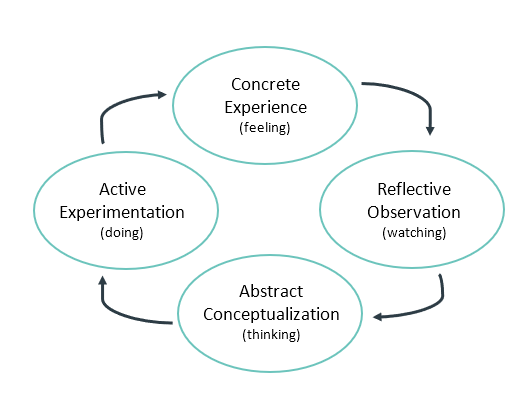Chapter 1: Work-Integrated Learning (WIL)
1.1 What is Work-Integrated Learning?
Work-integrated learning (WIL) is an opportunity for you to participate in career-focused experiential education. This means that there is a combination of classroom learning and a work placement. You literally gain work experience while you go to school! A WIL experience will help you to connect what you are learning in-class to experiences you are having at work. It gives you an opportunity to apply the theory you learn in school to your real life and your future career. At the same time, WIL also helps you to reflect upon and better understand work through the safe space of a classroom. The goal of WIL is for you to plan for career development and self-directed learning. Basically, you will learn how to monitor your career development through engaging in self assessment, setting goals, and evaluating your progress.
Did you know that work-integrated learning is linked to an increased prospect for student employment after graduation (Galarneau, Kinack & Marshall, 2020)? Students who participate in WIL benefit from taking part in a genuine real-work environment or project and experience the nuances that go along with culture, interpersonal skills, critical thinking, and conflict resolution that are a part of working life. Taking part in a WIL experience will help you to understand what you need to do and how you need to prepare to enter the Canadian workforce.
Co-operative and Work-Integrated Learning Canada (CEWIL), describes WIL as:
A model and process of curricular experiential education which formally and intentionally integrates a student’s academic studies within a workplace or practice setting. WIL experiences include an engaged partnership of at least: an academic institution, a host organization, and a student. WIL can occur at the course or program level and includes the development of learning outcomes related to employability, personal agency and life-long learning (CEWIL Canada, 2020).
The work-integrated learning process requires a level of commitment from you, your instructor, and your employer. You will work together to help advance your career development. At first, you will spend time preparing for the work placement opportunity by developing employability skills, competencies, and knowledge that can be applied alongside their studies within the workplace. Then, you will get to work! You will gain practical experience in a developing career and put your acquired knowledge from classroom into practice at work.
What is Experiential Learning?
Work-integrated learning is a form of experiential learning. The word “experiential” highlights that your learning is occurring through experience. The structured process of WIL guides you through a cycle of learning. David Kolb (1984), a psychologist and educational theorist, developed a theory that outlined the cycle of experiential learning. He suggests that you work through stages that build upon one another based on the experiences that you have and how you think about them afterward. Kolb’s cycle, based on Lewin’s experiential model, links together four continual stages: experience (feeling), reflection (watching), conceptualization (thinking), and active experimentation (doing) (Kolb, 1984, p. 30). Figure 1 shows how you move through the cycle.

Activity
Use the following activity to explore each of the stages in Kolb’s Experiential Learning Cycle.
- Concrete Experience
- An event, situation, or behaviour that made you go hmmm. In this stage of the learning cycle you pull from your experiences, whether current or past.
- Reflective Observation
- Taking a step back to think about the bigger picture and how the experience made you feel. In this stage of the learning cycle you to dig into your experiences and ask questions for deeper understanding and learning.
- Abstract Conceptualization
- What can be applied from what you learned in class. Fitting what you’ve just learned into everything that you already know. In this stage of the learning cycle you are tying in concepts and forming conclusions based on your experiences and learning.
- Active Experimentation
- How will you put what you have learned into practice? In this stage of the learning cycle, you apply your conclusions and new knowledge into practice towards new experiences.
Watch the video David Kolb’s Experiential Learning (5 minutes)
Media Attributions
- “Figure 1.1 Kolb’s Experiential Learning Cycle” by Deb Nielsen, Emily Ballantyne, Faatimah Murad, and Melissa Fournier is licensed under a CC BY-NC 4.0 licence. Based on Kolb’s learning theory.
- “David Kolb’s Experiential Learning” video by Begrepen be is licensed under the Standard YouTube licence.

